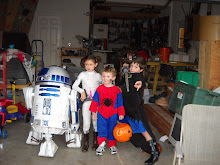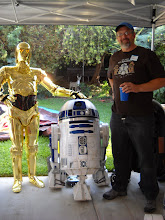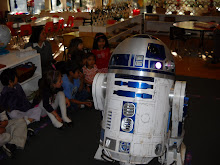
Here's the idea. The shoulder call for stacks of 8 1/8" pieces with some details and tight tolerances. I bought a sheet of PVC--$50 or so, which is a lot. But I didn't want to do this part in MDF. I think the plastic will give a better, more durable result, especially on the cut edges.
These templates I made by printing up the PDF files in the blueprints to full size. Then I sprayed on some adhesive to 3/4" plywood and laid the plans down on them. The left and right shoulders are mirror images of each other on the cut out details, so I am just going to reverse the template for the other side (I hope I remember to do that when the time comes.)
I worked pretty hard to get all of these cuts just right--there's only an 1/8" difference on the edge alignments. I cut the outside straight edges on the table saw with the fence. That let me get good straight cuts and to carefully control the overall width. To get the rounded curve on the top, I screwed the templates together and sanded them on the 90 degree table on the belt sander. That way they will match.
The inside curve--the round part on the top inside of the horseshoes--proved to be hard to cut. I tried the bandsaw, but mine won't cut curves with that tight of a raidus (3.39" diameter, I think.). Finally I built a little circle cutting jig on my router table. I mounted a piece of plywood over the table, put in a small, straight cutting bit, and them measured from the edge of the bit to the pivot point. I put a pin there, and drilled the exact center of my horseshoe template blanks to accept it. Then cutting the circle was clean and had good results. I think I got well within .005" of the club plans. That's good enough for me.
I've spent the last few days routing, chiseling, and filling in the square cutouts on the sides of the horseshoes. My router chewed up the pieces a bit, so you can see some bondo drying in the boxes here. That'll sand up cleanly.
You can also see some dowel pegs mounted on the templates. I got that idea from Vic Franco. Those will accept my PVC sheets, holding them, while I rout around the template with a flush trim bit. I tried a test piece and the results were very clean, and easy. So I cut a stack of blanks--16 for both shoulders and a few extra--and drilled them to match`the three holes for the dowel mounts. When the templates are done, I'll start cutting and stacking pieces.
























